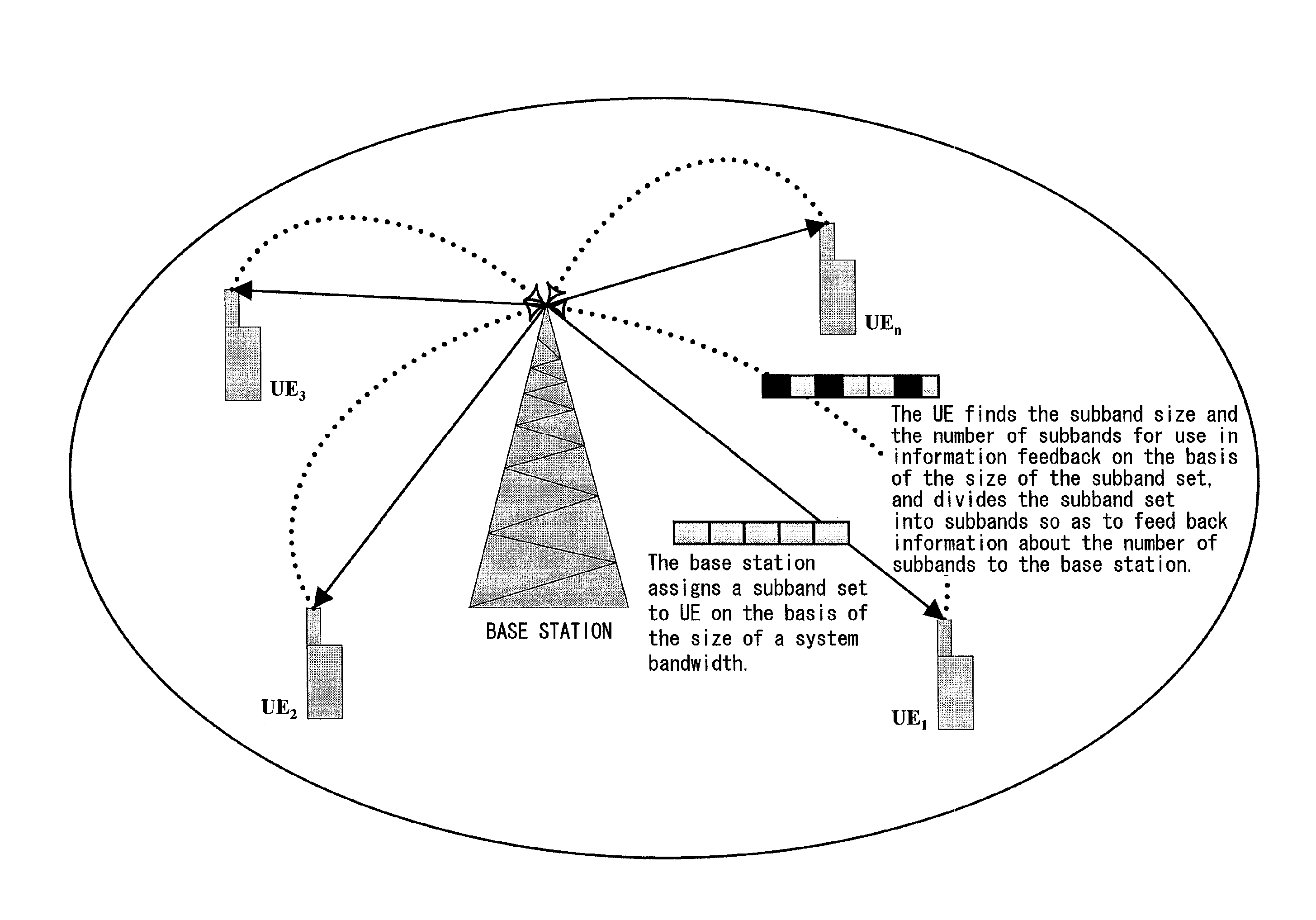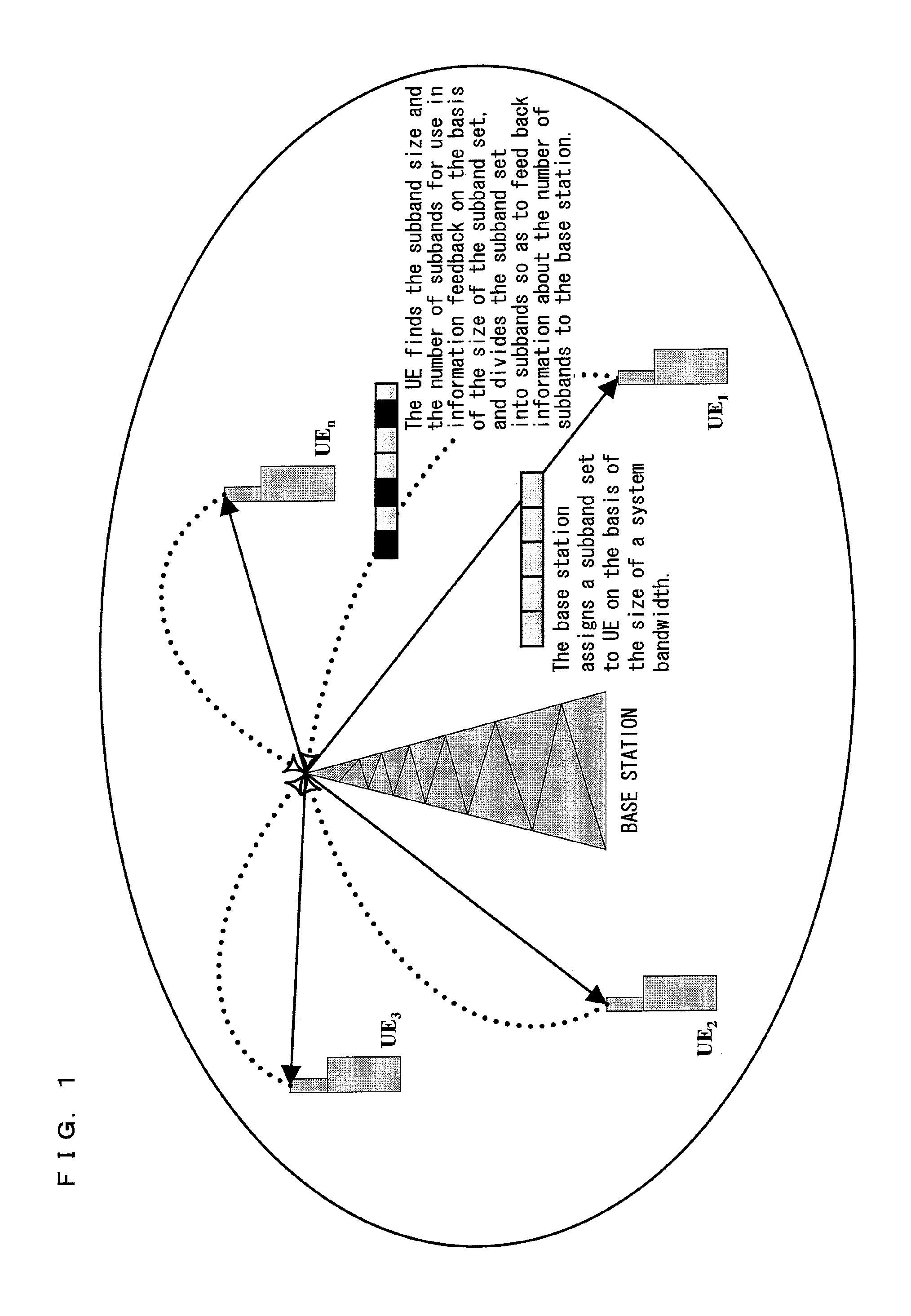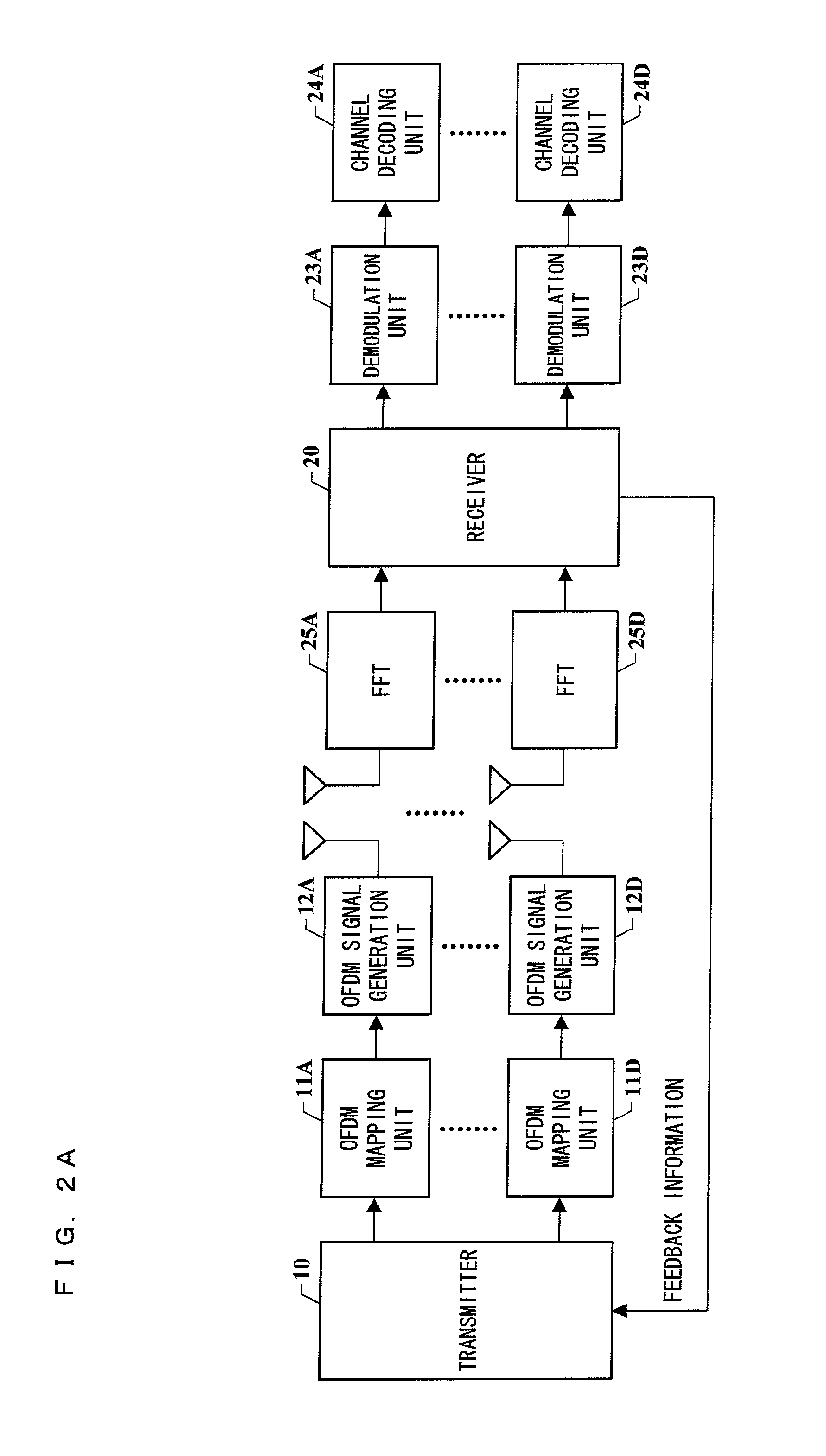Determining method for use in information feedback, base station, user equipment, and communications system
a technology of information feedback and determining method, which is applied in the field of wireless transmission techniques, can solve the problems of increasing the load of wireless transmission, reducing the efficiency of frequency spectrum use for uplink, and consuming large amounts of data, so as to improve the quality of service of wireless cells, improve the accuracy of feedback, and reduce the amount of feedback information
- Summary
- Abstract
- Description
- Claims
- Application Information
AI Technical Summary
Benefits of technology
Problems solved by technology
Method used
Image
Examples
application example 1
[0067](1) Configuration of a Wireless Cell
[0068]As illustrated in FIG. 1, a wireless cell includes a single base station (eNodeB) and plural pieces of user equipment (UE). FIGS. 2A through 2C illustrate the principle of how information is fed back within the wireless cell.
[0069](2) The subband division unit 13 of the base station obtains a subband size k (i.e., the number of resource blocks included in each subband) from Table 1, stored in a memory device (not shown) of the base station, on the basis of a system bandwidth size NSYS—RB (i.e., the number of resource blocks included in the system bandwidth). Refer to Table 1 below for a specific method of how the base station divides the system bandwidth into subbands. In Table 1, the size is expressed as the number of resource blocks (RBS).
[0070]
TABLE 1SYSTEM BANDWIDTH SIZESUBBAND SIZENSYS—RB(RBS)k(RBS)6-7BROADBANDONLY 8-10211-26227-633 64-1104
[0071]Resource blocks in each subband are located continuously on a frequency spectrum. In a...
application example 2
[0081](1) Configuration of a Wireless Cell
[0082]As illustrated in FIG. 1, a wireless cell includes a single base station (eNodeB) and plural pieces of user equipment (UE). FIGS. 2A through 2C illustrate the principle of how information is fed back within the wireless cell.
[0083](2) The subband division unit 14 of the base station obtains a subband size k (i.e., the number of resource blocks included in each subband) from Table 1, stored in a memory device (not shown) of the base station, on the basis of a system bandwidth size NSYS—RB (i.e., the number of resource blocks included in the system bandwidth). Refer to Table 1 below for a specific method of how the base station divides the system bandwidth into subbands.
[0084]Resource blocks in each subband are located continuously on a frequency spectrum, and the individual subbands are sequentially located continuously on a frequency spectrum. In a case where a number PRB of resource blocks included in a continuous frequency spectrum p...
application example 3
[0093](1) Configuration of a Wireless Cell
[0094]As illustrated in FIG. 1, a wireless cell includes a single base station (eNodeB) and plural pieces of UE. FIGS. 2A through 2C illustrate the principle of how information is fed back within the wireless cell.
[0095](2) The subband division unit 14 of the base station finds a subband size k (i.e., a number of resource blocks included in each subband) on the basis of a system bandwidth size NSYS—RB (i.e., a number of resource blocks included in the system bandwidth). Refer to Table 1, stored in a memory device (not shown) of the base station, for a specific method of how the base station divides the system bandwidth into subbands.
[0096]Resource blocks in each subband are located continuously on a frequency spectrum, and the individual subbands are located continuously on a frequency spectrum in order of their respective numbers. In a case where a number PRB of resource blocks included in a continuous frequency spectrum part within the sys...
PUM
 Login to View More
Login to View More Abstract
Description
Claims
Application Information
 Login to View More
Login to View More - R&D
- Intellectual Property
- Life Sciences
- Materials
- Tech Scout
- Unparalleled Data Quality
- Higher Quality Content
- 60% Fewer Hallucinations
Browse by: Latest US Patents, China's latest patents, Technical Efficacy Thesaurus, Application Domain, Technology Topic, Popular Technical Reports.
© 2025 PatSnap. All rights reserved.Legal|Privacy policy|Modern Slavery Act Transparency Statement|Sitemap|About US| Contact US: help@patsnap.com



